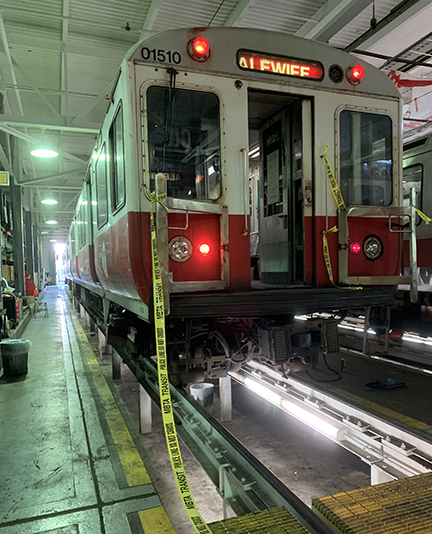
BOSTON — The family of a man dragged to his death by a Massachusetts Bay Transportation Authority train last year after his arm became caught in a closing door has sued the transit agency.
The Boston Globe reports the family of Robinson Lalin, killed in the April 10, 2022, accident on the Red Line, alleges “carelessness and negligence” on the part of the MBTA for its failure to make sure the doors were clear of passengers before the train departed and for failure to properly “inspect, maintain, repair, and monitor” the rapid-transit cars and station.
The attorney representing the Laler family said in a statement he hopes the lawsuit will bring justice for the family and “much-needed accountability for the MBTA.”
An MBTA spokesman declined to comment on the suit but said the agency has extended its condolences to the family and that the agency is committed to safety and reliability improvements.
Lalin, 39, was dragged some 105 feet after exiting the Red Line train at the Broadway station at 12:30 a.m. on April 10, according to the National Transportation Safety Board’s preliminary report [see “NTSB report: Door-system failure led to death …,” Trains News Wire, May 3, 2022]. The NTSB investigation is ongoing.













Off topic; I wonder why TRAINS NEWSWIRE has not reported on the Greek rail tragedy.
If you see something of interest, rail related, email newswire at
newswire@trainsmag.com
As the News Wire editor, I can answer that. Given the wealth of coverage from general news outlets and the lack of any particular expertise on the Greek rail industry, it seems to me this is a case where we have very little to add to what you can receive elsewhere. This is also in keeping with a decision we made a year or so ago to stop reporting fatal international rail accidents when we otherwise provided no coverage of the location. Ultimately, it’s a matter of allocating limited resources.
Thank you both for the excellent explanations.
Unfortunately, the more sensitive you make the door closer mechanisms, the more you suffer “false positives” and unnecessary delays at stops. Almost everything in life is a trade-off.
The guy was literally dragged to death. Murder by train. That’s not a question of the sensitivity of a door closing mechanism. That’s full on failure of a crucial safety system. I wonder if the age of the cars has anything to do with it. It’s clearly one of the really ancient ones from 1969. Those should’ve been gone 20 years ago.
There’s no excuse for this nonsense. MBTA has been bad at maintenance for decades. Clearly it hasn’t improved since I moved away in the late 90s.
That’s what they did in Philadelphia on both the Broad St Subwat and Market-Frankford El, only no whistle: the conductor would call out “Watch the Doors!” then close the doors while looking both ways.
At one time the doors had “sensitive edges” with a wire inside the rubber. If it were deflected by something obstructing the door, the door would reopen. We’re talking 1926 technology here.
Philip do you mean like today’s elevators? It doesn’t take to much pressure to stop or reverse the door. My self I have grabbed the door many times to let someone get in.
Folks, I just dredged up a distant meory from my youth, which was a thousand decades ago. It must have been the Boston subway because that’s where I grew up but it might have been New York where my family occasionally visited, or maybe Toronto where I once traveled. A subway train has loaded. A train guard leans out the window, looks to his left and to his right to see if the doors have cleared. The guard blows a whistle and only then does the driver move the train.
It wasn’t a perfect system.. Wouldn’t work on a crowded platform where customers waited for a different train. No train guard could catch the situtation at every door. And there’s always the tradeoff between the need to keep the train moving as against an accident that might happen.
Do we need to go back to that? Or with today’s tech, a camera at each door?
Interesting observations. I was a resident of NYC in the summers form ’59-’64, and I recall that door process as well. In addition to the camera suggestion, I wonder about advanced sensors that could recognize the failure of a door to fully close. I think there is some type of sensor in that manner, but perhaps they can’t recognize a sleeve caught, or, as in Washington, DC, a dog’s leash. I once had a briefcase caught in a door in the DC subway a few years ago, and the train moved out and ran through to the next station. When the doors opened there, I was able to remove it. Of course, I was fortunate in that I was inside the car. However, the fact that a 4″ thick briefcase did not trigger the sensor caused me to have heightened awareness for all further trips.